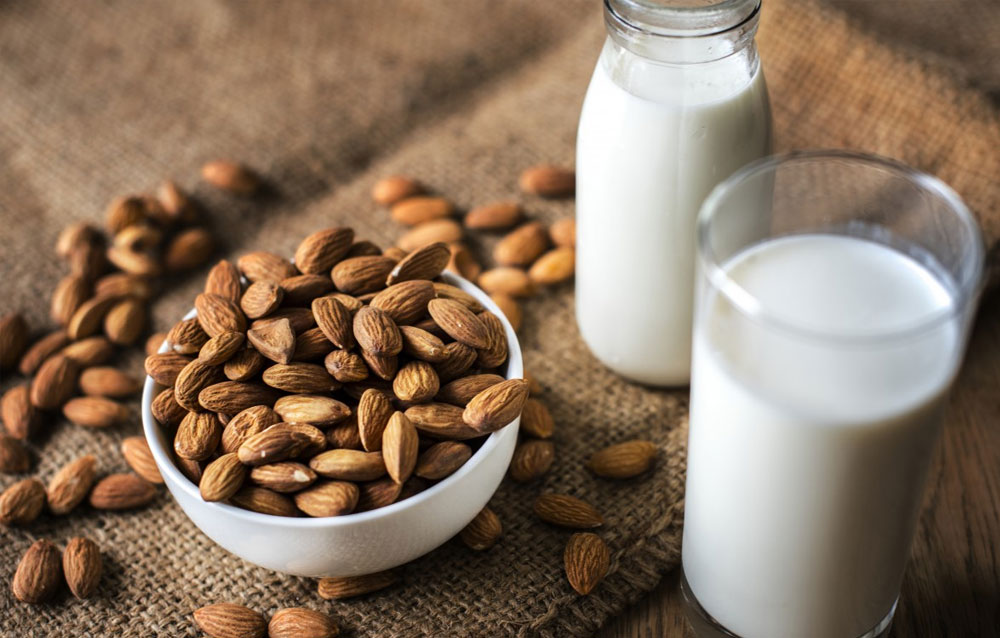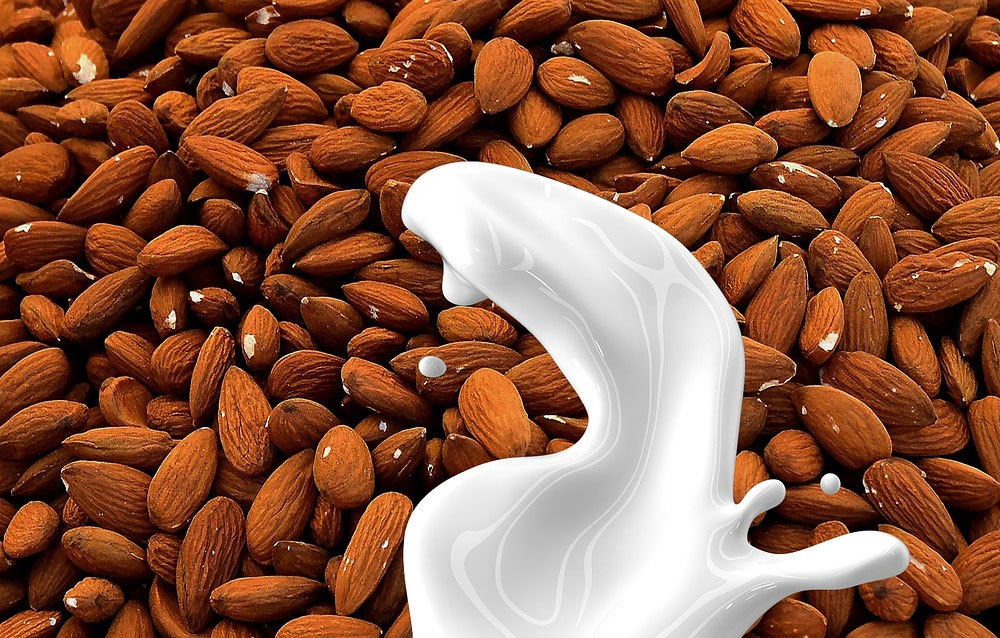
Hailing from Iran, the almond is related to such trees as peaches, cherries and apricots. Powdered Almond Milk is full of proteins, and regular consumption of almonds may lower LDL cholesterol levels and reduce heart disease risk. A true healthy snack, despite their high caloric value.
Almond has also long been a leading milk substitute. Almond milk is currently the most widely consumed alternative to milk in the US, with the rest of the world following suit.
One of the greatest ups of almond milk is the fact that it comes in a powdered form. Due to its convenience, almond milk powder has already become the go-to choice for athletes, vegans, hikers, and many others who need a tasty and wholesome stand-in for dairy milk.
In this article you’ll get to know why almond milk is good for you, and how you can make and use powdered almond milk at home.
How almond milk benefits you

Almond milk is as popular as it is because it simply ticks a lot of boxes for a lot of people. Here’s five reasons why you might want to give almond milk a go:
1. It’s nutritious.
There are two kinds of almond milk products: enriched and natural. The enriched varieties are brimming with Vitamin D, calcium, and protein. Even the natural kinds still pack a respectable vitamin and mineral count (Vitamin E abounds). [Source.] Recent studies promise stronger bones and even reduced heart disease! But remember: almond milk is not a substitute for breast milk or infant formula (it lacks some necessary nutrients).
2. It’s low on calories.
Almond nuts are in fact high in calories, but almond milk products are always watered down. This means that you aren’t getting nearly as many calories, even compared to dairy milk. A cup of almond milk contains about 39 calories. For comparison, that’s half the amount of calories in a cup of skim milk. You can drink almond milk guilt free.
3. It’s dairy free.
Quite a few people lack the ability to completely digest lactose. But lactose intolerants rejoice: almond milk won’t leave you bloated and gassy. Even vegans can join in. Because this healthy beverage is completely plant based, it contains absolutely no dairy whatsoever.
4. It’s delicious.
People who love almond milk often cite its nutty flavour and creamy texture. If it weren’t for the great taste, you’d barely be able to tell it apart from its dairy rival.
5. It’s convenient to use.
Spilling milk from the carton all over a countertop is a common experience. Cumbersome cartons and hefty jugs have long been a gripe of the dairy-loving community. With almond substitutes, this isn’t an issue — thanks to powdered almond milk, you can serve yourself as much or as little as you like without any hassle. We’ll talk about how in just a second.
If we’ve tickled your curiosity as well as your taste buds, you’d almost be ready to dive headfirst into the almond milk diet. Almost, because almond milk isn’t exactly as a light on the pocket as it is on calories. If this problem has ever crossed your mind, there’s a cost-effective solution: powdered almond milk you can make in your very own kitchen.
How to make powdered almond milk at home.

Here’s the final selling point of almond milk. You can make powdered almond milk yourself, in the comfort of your kitchen!
Why powdered almond milk? Simple: convenience. You can carry a little pack of the powder around with you for a healthy pick-me-up whenever, wherever. All it takes is a little bit of water.
Here’s how to make some DIY almond milk powder. (Hint: you’ll need a dehydrator.)
- Soak your almond nuts for 12-24 hours, then deshell them.
- You’ll know they’re done when they’re plump and squishy. You can get rid of the water afterwards.
- Blend the almonds with some water.
- We’re going for the powdered version, so it doesn’t have to be the perfect consistency or taste.
- Strain the solids.
- Use a nut milk bag for best results. A sieve or cheesecloth works too.
- Line your dehydrator tray with non-stick paper or dehydrator sheet.
- If the tray doesn’t have sides, make a “bowl” with the sheet and paper clips.
- Pour just a bit of milk into the tray.
- You should barely cover the tray’s bottom.
- Run the dehydrator at 60°C for 16 to 18 hours.
- Your almond milk should have completely dried out.
- Break up the remaining brittle.
- You’ll be left with a fine almond milk powder.
And there you go — powdered almond milk, made home style. A filling, nutritious thirst quencher for all your on-the-go needs.
How to use almond milk.

Almond milk has quite a few culinary uses, all of them delicious. Here’s how you can add a nutty touch to your recipes:
- Use it in your morning bowl of cereal
- Add it to tea, coffee and smoothies
- Use it to replace dairy milk in just about any baked recipe
- Use it is a sweet addition to sauces, soups and salad dressings
The possibilities are as endless as they are yummy. Be sure to experiment around with your favourite dishes!
As you’ve probably come to understand, almond milk and its powdered version are milk substitute royalty. It’s good for you while tasting great. You can even make powdered almond milk at home.
Give it a shot, chances are, you won’t look back. And be sure to let us know your experiences with it, too.




